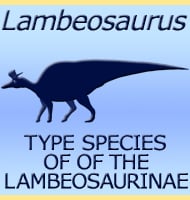In Depth
The partially preserved skull of Cuspicephalus was first recovered in 2009 by Steve Etches, and is preserved on a slab of stone. Although incomplete the feature that stands out most at first glance is the enlarged nasoantorbital fenestra (the opening that would be in front of the eye socket) that is greater than half the total length of the skull. There is also the presence of the base of a head crest that would have risen upwards from the skull that according to the describers may have grown quite high. This is quite a reasonable supposition as pterosaurs that have large skull crests often have large fenestra as well in order to save on total skull weight. The nature of the crest material present also suggests that it was actually the base growth of the crest. Pterosaur crests are not thought to have always been solid bone throughout, with some being of softer body tissue that is weaker and does not preserve as well, but still has a more solid base. Softer material would actually be more able to change colour such as becoming more enriched during the breeding season, while becoming duller in other times of the year and individuals that were out of condition.
Like with so many other pterosaurs the skull of Cuspicephalus has a rectangular cross section, something that would have increased strength while still remaining light weight. The dimensions of Cuspicephalus’s skull give it a rostral index of 5.4, the largest of any other known pterosaur. Around a dozen teeth are present in the skull although the total amount for the living animal may be double this. The teeth are also largest at the front of the mouth and in other piscivorous pterosaurs this is seen as an adaptation to increase the chance of prey capture as the beak is dipped into the water to snatch a fish. It is also seen in some ctenochasmid pterosaurs however that strain invertebrates out of the water. While the lower jaw of Cuspicephalus is still unknown, the dentition here would have likely mirrored the upper jaw so that the teeth intermeshed together to create a better prey trap. Determining the phylogenetic placement of Cuspicephalus is difficult, not just because of the incomplete preservation of the remains but because they lack clearly identifiable group characterisitcs. While some have proposed a similarity to pterodactyloids like Germanodactylus, most palaeontologists recognise that it is more similar to wukongipteroid pterosaurs like Darwinopterus. Still the fossil material is not complete enough to confirm its identity either way which is why it retains a position within the Monofenestrata, an unranked group that is used as a junction point that leads into both the Pterodactyloidea and Wukongopteridae.
Binomal animal names are usually based upon a defining physical characteristic and in this case both genus and species name reflect this. Cuspicephalus roughly translates as ‘pointed snout’ while the species name honours cartoonist Gerald Scarfe whose artistic style sees people drawn with pointed noses, something that could be interpreted as similar to the beak of a pterosaur.
Further Reading
– A new monofenestratan pterosaur from the Kimmeridge Clay Formation (Kimmeridgian, Upper Jurassic) of Dorset, England. – Acta Palaeontologica Polonica 58(2):285-294 – D. M. Martill & S. Etches – 2013. – The relationships of Cuspicephalus scarfi Martill and Etches, 2013 and Normannognathus wellnhoferi Buffetaut et al., 1998 to other monofenestratan pterosaurs. – Contributions to Zoology. 84 (2): 115–127. – Mark P. Witton, Michael O’Sullivan & David M. Martill – 2015.








